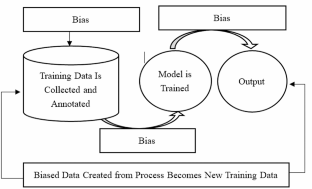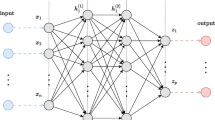Abstract
This comprehensive review and analysis delve into the intricate facets of bias within the realm of deep learning. As artificial intelligence and machine learning technologies become increasingly integrated into our lives, understanding and mitigating bias in these systems is of paramount importance. This paper scrutinizes the multifaceted nature of bias, encompassing data bias, algorithmic bias, and societal bias, and explores the interconnectedness among these dimensions. Through an exploration of existing literature and recent advancements in the field, this paper offers a critical assessment of various bias mitigation techniques. It examines the challenges faced in addressing bias and emphasizes the need for an intersectional and inclusive approach to effectively rectify disparities. Furthermore, this review underscores the importance of ethical considerations in the development and deployment of deep learning models. It highlights the necessity of diverse representation in data, fairness-aware algorithms, and interpretability as key elements in creating bias-free AI systems. By synthesizing existing research and providing a holistic overview of bias in deep learning, this paper aims to contribute to the ongoing discourse on mitigating bias and fostering equity in artificial intelligence systems. The insights presented herein can serve as a foundation for future research and as a guide for practitioners, policymakers, and stakeholders to navigate the complex landscape of bias in deep learning.



Similar content being viewed by others
Data Availability
Not applicable.
References
Ferrara E (2023) The butterfly effect in artificial intelligence systems: implications for AI bias and fairness, machine learning with applications. 15(September):100525, 2024, https://doi.org/10.1016/j.mlwa.2024.100525
Yang L (2024) Characteristics of datasets for fake news detection to mitigate domain bias. Inform Eng Express 10(1):1. https://doi.org/10.52731/iee.v10.i1.786
Giloni A et al (2024) BENN: bias estimation using a deep neural network. IEEE Trans Neural Networks Learn Syst 35(1):117–131. https://doi.org/10.1109/TNNLS.2022.3172365
.Teo CTH, Abdollahzadeh M, Cheung NM (2024) FairTL: a transfer learning approach for bias mitigation in deep generative models. IEEE Journal on Selected Topics in Signal Processing PP(XX):1–13. https://doi.org/10.1109/JSTSP.2024.3363419
Liu H, Sheng M, Sun Z, Yao Y, Hua XS, Shen HT (2024) Learning with Imbalanced noisy data by preventing bias in sample selection. IEEE Trans Multimedia PP:1–12. https://doi.org/10.1109/TMM.2024.3368910
Dominguez-Catena I, Paternain D, Galar M, Intelligence (2024) Metrics for dataset demographic bias: a case study on facial expression recognition, IEEE Transactions on Pattern Analysis and Machine Intelligence PP:1–18 https://doi.org/10.1109/TPAMI.2024.3361979
Kulkarni A, Balachandran V, Divakaran DM, Das T (2024) MitigaTing Bias In Machine Learning Models For Phishing Webpage Detection. 2024 16th International Conference on COMmunication Systems and NETworkS, COMSNETS 2024, Ml:430–432, https://doi.org/10.1109/COMSNETS59351.2024.10427170
Zhang X, Zhang F, Xu C (2024) NExT-OOD: overcoming dual multiple-choice VQA biases. IEEE Trans Pattern Anal Mach Intell 46(4):1913–1931. https://doi.org/10.1109/TPAMI.2023.3269429
Rattanaphan S, Briassouli A (2024) Evaluating generalization, bias, and fairness in deep learning for metal surface defect detection: a comparative study. Processes 12(3):456. https://doi.org/10.3390/pr12030456
Openja M, Laberge G, Khomh F (2024) Detection and evaluation of bias-inducing features in machine learning. 29(1). https://doi.org/10.1007/s10664-023-10409-5
Dogra V, Verma S, Kavita M, Wozniak J, Shafi, Ijaz MF (2024) Shortcut learning explanations for deep natural language processing: a survey on dataset biases. IEEE Access 12(January):26183–26195, https://doi.org/10.1109/ACCESS.2024.3360306
Chen Z, Zhang JM, Sarro F, Harman M (2023) A comprehensive empirical study of bias mitigation methods for machine learning classifiers. ACM Trans Softw Eng Methodol 32(4). https://doi.org/10.1145/3583561
Hort M, Chen Z, Zhang JM, Harman M, Sarro F (2023) Bias mitigation for machine learning classifiers: a comprehensive survey. ACM J Responsible Comput. https://doi.org/10.1145/3631326
Pagano TP et al (2023) Bias and unfairness in machine learning models: a systematic review on datasets, tools, fairness metrics, and identification and mitigation methods. Big Data Cogn Comput 7(1):1–31. https://doi.org/10.3390/bdcc7010015
Siddique S, Haque MA, George R, Gupta KD, Gupta D, Faruk MJH (2023) Survey on machine learning biases and mitigation techniques. Digital 4(1):1–68. https://doi.org/10.3390/digital4010001
Miller RJH et al (2023) Mitigating bias in deep learning for diagnosis of coronary artery disease from myocardial perfusion SPECT images. Eur J Nucl Med Mol Imaging 50(2):387–397. https://doi.org/10.1007/s00259-022-05972-w
Bai M et al (2023) The uncovered biases and errors in clinical determination of bone age by using deep learning models. Eur Radiol 33(5):3544–3556. https://doi.org/10.1007/s00330-022-09330-0
Guo Y, Nie L, Cheng H, Cheng Z, Kankanhalli M, Bimbo AD (2023) On modality bias recognition and reduction. ACM Trans Multimedia Comput Commun Appl 19(3):1–22. https://doi.org/10.1145/3565266
Donald A et al (2023) Bias detection for customer interaction data: a survey on datasets, methods, and tools. IEEE Access 11(March):53703–53715, https://doi.org/10.1109/ACCESS.2023.3276757
Lin Z, Liu D, Pan W, Yang Q, Ming Z (2023) Transfer learning for collaborative recommendation with biased and unbiased data. Artif Intell 324:103992. https://doi.org/10.1016/j.artint.2023.103992
Baracaldo N et al (2023) Benchmarking the effect of poisoning defenses on the security and bias of deep learning models. 2023 IEEE security and privacy Workshops (SPW) 45–56. https://doi.org/10.1109/SPW59333.2023.00010
Gilg J, Herzog F (2023) The box size confidence bias harms your object detector. 2023 IEEE/CVF Winter Conference on Applications of Computer Vision (WACV) 1471–1480, https://doi.org/10.1109/WACV56688.2023.00152
Nagpal S, Singh M, Singh R (2023) In-group bias in deep learning-based face recognition models due to ethnicity and age. IEEE Trans Technol Soc 4(1):54–67. https://doi.org/10.1109/TTS.2023.3241010
Kim JW, Kim SY, Sohn KA (2023) Dataset bias prediction for few-shot image classification. Electron (Switzerland) 12(11):1–14. https://doi.org/10.3390/electronics12112470
Dreyer M, Samek W, Nov CV (2023) Revealing hidden context bias in segmentation and object detection through concept-specific explanations. 2023 IEEE/CVF Conference on Computer Vision and Pattern Recognition Workshops (CVPRW) 3829–3839
Wehrli S, Hertweck C, Amirian M, Glüge S, Stadelmann T (2022) Bias, awareness, and ignorance in deep– learning– based face recognition. AI Ethics 2(3):509–522. https://doi.org/10.1007/s43681-021-00108-6
Mohammad C, Haider R, Clifton C, Metrics AF, Unfair AI (2022) It isn’t just biased data, 2022 IEEE International Conference on Data Mining (ICDM) (Icdm):957–962. https://doi.org/10.1109/ICDM54844.2022.00114
Gwyn T, Roy K (2022) Examining gender bias of convolutional neural networks via facial recognition. future internet 14(12). https://doi.org/10.3390/fi14120375
Sourlos N, Wang J, Nagaraj Y, van Ooijen P, Vliegenthart R (2022) Possible bias in supervised deep learning algorithms for CT lung nodule detection and classification. Cancers 14(16):1–15. https://doi.org/10.3390/cancers14163867
Salman H, Jain S, Ilyas A, Engstrom L, Wong E, Madry A (2022) When does bias transfer in transfer learning? arxiv. Available: http://arxiv.org/abs/2207.02842
Hall M, van der Maaten L, Gustafson L, Jones M, Adcock A (2022) A systematic study of bias amplification, computer vision and pattern recognition. 1(1). Available: http://arxiv.org/abs/2201.11706
Bashar MA, Nayak R, Kothare A, Sharma V, Kandadai K (2021) Deep learning for bias detection: from inception to deployment. Commun Comput Inform Sci 1504 CCIS:86–101. https://doi.org/10.1007/978-981-16-8531-6_7
Cha D, Pae C, Lee SA, Na G, Hur YK, Young H (2021) Differential biases and variabilities of deep learning– based artificial intelligence and human experts in clinical diagnosis: retrospective cohort and survey study corresponding author. JMIR Med Inf 9:1–12. https://doi.org/10.2196/33049
Schmid M (2021) Bias in cross-entropy-based training of deep survival networks. IEEE Trans Pattern Anal Mach Intell 43(9):3126–3137. https://doi.org/10.1109/TPAMI.2020.2979450
Shen X, Plested J (2021) Exploring biases and prejudice of facial synthesis via Semantic Latent Space. 2021 Int Joint Conf Neural Networks (IJCNN) 1–8. https://doi.org/10.1109/IJCNN52387.2021.9534287
Schaaf N, de Mitri O, Kim HB, Windberger A, Huber MF (2021) Towards measuring bias in image classification, lecture notes in computer science (including subseries lecture notes in artificial intelligence and lecture notes in bioinformatics. 12893 LNCS(036):433–445, https://doi.org/10.1007/978-3-030-86365-4_35
Krishnakumar A, Prabhu V, Sudhakar S, Hoffman J (2021) UDIS: Unsupervised discovery of bias in deep visual recognition models, computer vision and pattern recognition. 1–15. Available: http://arxiv.org/abs/2110.15499
He Q, Hou X, WD3 (2020) Taming the estimation bias in deep reinforcement learning. 2020 IEEE 32nd International Conference on Tools with Artificial Intelligence (ICTAI) WD3:, 391–398. https://doi.org/10.1109/ICTAI50040.2020.00068
Serna I, Peña A, Morales A, Fierrez J (2020) Insidebias: measuring bias in deep networks and application to face gender biometrics. Proc - Int Conf Pattern Recognit 3720–3727. https://doi.org/10.1109/ICPR48806.2021.9412443
Wang Z et al (2020) Towards fairness in visual recognition: effective strategies for bias mitigation. Proc IEEE Comput Soc Conf Comput Vis Pattern Recognit 8916–8925. https://doi.org/10.1109/CVPR42600.2020.00894
Kortylewski A, Morel-forster A (2019) Analyzing and reducing the damage of dataset bias to face recognition with synthetic data. 2019 IEEE/CVF Conf Comput Vis Pattern Recognit Workshops 2261–2268. https://doi.org/10.1109/CVPRW.2019.00279
Guo L, Lei Y, Xing S, Yan T, Li N (2019) Deep convolutional transfer learning network: a new method for intelligent fault diagnosis of machines with unlabeled data. IEEE Trans Industr Electron 66(9):7316–7325. https://doi.org/10.1109/TIE.2018.2877090
Wang T, Zhao J, Yatskar M, Chang K.W., Ordonez V (2019) Balanced datasets are not enough: estimating and mitigating gender bias in deep image representations. Proc IEEE Int Conf Comput Vis 2019–Octob(no Iccv):5309–5318. https://doi.org/10.1109/ICCV.2019.00541
Fard S F., Hollensen P, Mcilory S, Trappenberg T (2017) Impact of biased mislabeling on learning with deep networks. 2017 Int Joint Conf Neural Networks (IJCNN) 2652–2657. https://doi.org/10.1109/IJCNN.2017.7966180
Funding
No funding was received.
Author information
Authors and Affiliations
Corresponding author
Ethics declarations
Conflict of Interest
The authors declare that they have no conflict of interest.
Ethical Approval
We would like to emphasize that this research did not involve the use of human or animal subjects.
Additional information
Publisher’s Note
Springer Nature remains neutral with regard to jurisdictional claims in published maps and institutional affiliations.
Rights and permissions
Springer Nature or its licensor (e.g. a society or other partner) holds exclusive rights to this article under a publishing agreement with the author(s) or other rightsholder(s); author self-archiving of the accepted manuscript version of this article is solely governed by the terms of such publishing agreement and applicable law.
About this article
Cite this article
Shah, M., Sureja, N. A Comprehensive Review of Bias in Deep Learning Models: Methods, Impacts, and Future Directions. Arch Computat Methods Eng (2024). https://doi.org/10.1007/s11831-024-10134-2
Received:
Accepted:
Published:
DOI: https://doi.org/10.1007/s11831-024-10134-2




